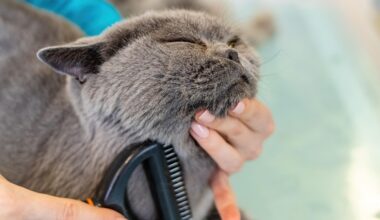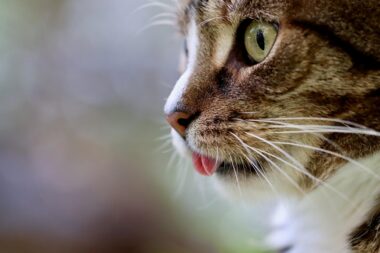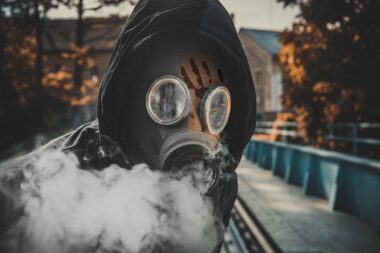The Effects of Alcohol Consumption on Cats and How to Prevent It
Alcohol consumption can pose severe health risks for cats, including lethargy, vomiting, and even coma. Unlike humans, cats are not equipped to process alcohol effectively, which makes even small amounts dangerous. Ethanol, the type of alcohol found in many beverages, is toxic to pets and can lead to alcohol poisoning. Symptoms of poisoning can vary but often include disorientation, difficulty in breathing, and seizures. If you suspect your cat has ingested alcohol, it’s essential to act fast. Contact your veterinarian immediately for assistance. Prevention is crucial; always keep alcoholic drinks securely away from pets. Ensure that family and guests are aware of the risks and do not leave drinks unattended. Alcohol isn’t always obvious in all forms—some foods, such as desserts, may also contain alcohol. Monitor your cat’s environment for items that could be harmful or tempting. As a responsible cat owner, it’s vital to educate yourself on safe practices, ensuring your feline stays healthy and safe. Take the time to learn which human foods are explicitly toxic to cats and take proactive steps to prevent any exposure.
Understanding the signs of alcohol toxicity is essential for cat owners. Alcohol affects the central nervous system, leading to varying degrees of sedation, vocalization, or hyperactivity. Serious cases may escalate quickly, showing respiratory issues or loss of consciousness. The condition can worsen rapidly, making prompt medical attention necessary. First, assess the situation—identify the source and amount of alcohol consumed by your cat. It may be harder to detect if the drink is mixed with other ingredients such as soda or fruit juices. Always err on the side of caution: if you suspect your pet has ingested any alcohol, seek help immediately. Your veterinarian may need to perform tests to determine the extent of the toxicity. Supportive care will often be required, including intravenous fluids to manage dehydration and help stabilise any complications. Monitoring your cat’s vital signs is also necessary during this time. The sooner you act, the better the chances for a full recovery. Additionally, informing yourself of pet-friendly alternatives can help engage your cat without resorting to potentially hazardous substances.
Common Sources of Alcohol in the Home
It is vital to recognize common sources of alcohol that may pose risks to our feline friends. Many pet owners may overlook common alcoholic beverages that can unexpectedly impact cats. Beer, wine, spirits, and liquors have a significant ethanol concentration, but various household items may also contain alcohol, presenting hidden threats. Cooking ingredients such as vanilla extract, certain extracts, and even some over-the-counter medications may contain alcohol present in smaller amounts. Additionally, fermented foods can release alcohol as they break down. Cats are curious creatures and may easily access these items. To prevent access, secure all alcoholic substances in tightly closed cabinets or high shelves. Remember to educate your family and guests on the potential dangers of alcohol consumption near pets. Additionally, always dispose of trash that might contain alcoholic food or drink remnants, as they can be incredibly tempting for a cat scavenger. Regularly check areas where alcohol is kept and ensure safety by maintaining a clean, accessible home environment for your cat. Early education and preventive measures are key to ensuring a safe living space for your feline companion.
In addition to common sources of alcohol, pet owners should be aware of medications that can harm cats. Some prescription and over-the-counter medications contain traces of alcohol, posing severe risks if ingested. Always consult a vet before administering any medication intended for human use. When managing a cat’s health condition, stick to vet-recommended solutions and avoid giving human alcoholic medications. Disposal and storage of pet medications should mimic that of alcoholic beverages—out of reach and securely sealed. Even the slightest exposure can cause adverse reactions, including vomiting or more severe complications. Be vigilant when using medications around pets and follow all dosage guidelines carefully. It’s always wise to remain cautious and keep your cat away from areas where these substances are present. In cases of medication that need to be administered, discuss alcohol-free alternatives with your vet. Take the time to educate yourself about safe medication practices to ensure your cat remains healthy while addressing any health concerns. Safety should always be the utmost priority in a pet-friendly environment.
Alcohol Poisoning Symptoms in Cats
The symptoms of alcohol poisoning in cats can manifest quickly and may vary dramatically from mild to severe. Early signs include confusion, unusual lethargy, and excessive drooling. Vomiting, diarrhea, and loss of coordination may follow, affecting your cat’s ability to move comfortably. In cases of severe ingestion, symptoms can escalate to difficulty breathing and seizures. It’s crucial to monitor your cat closely should you suspect that they have ingested alcohol, even in small amounts. Contact your veterinarian immediately if visible symptoms present themselves, as time is of the essence. Diagnosing alcohol poisoning typically involves a thorough examination and blood tests to assess the toxicity levels present in your cat. Given the rapid onset of severe symptoms, no pet owner should underestimate the risk of alcohol consumption. Viewing early signs can provide valuable insight into potential poisoning from alcohol. Always keep an emergency vet contact information readily available. In cases of suspected poisoning, ensure prompt communication with your vet and provide as much detail as possible to assist their diagnosis and treatment plan.
The education of cat owners regarding alcohol consumption and its dangers is paramount for responsible pet ownership. Understanding the implications of the effects of this substance on health can significantly reduce the incidence of accidental ingestion. Pet owners must accept the responsibility for their cat’s environment. This includes sharing safe practices within their households while ensuring proper guidelines are established. Encouraging the sharing of information among friends and family can create a community that supports your efforts in maintaining a safe space. Consider reaching out to local shelters or animal welfare organizations to help educate others about the dangers posed by alcohol. Provide resources for friends who may not realize the severe impact it can have on cats. Engaging with your local community enables the spread of awareness while fostering a responsible pet culture. Creating connections among pet owners can put an end to myths surrounding pets and alcohol. Always advocate for your pet’s health by sharing reliable information to empower other pet owners. Education is a good starting point to prevent future accidents from occurring.
Conclusion: Ensuring a Safe Environment
In conclusion, creating a safe and healthy environment for your cat should be of paramount importance. By understanding the effects of alcohol consumption and recognizing sources that may pose dangers, you can prevent potentially devastating consequences. Always remain proactive and aware, ensuring that substances harmful to your feline friend are stored securely and out of reach. Share your knowledge with others, discussing the risks and damaging effects alcohol can have on pets to foster a responsible pet ownership community. Adhering to these guidelines sets the foundation for a safe living environment. By adopting these strategies, you create a happier, healthier home for your beloved cat. Ultimately, your awareness and action can help maintain a quality of life for your pet, ensuring their well-being and happiness. Regular vet check-ups can also provide opportunities to discuss any concerns regarding your cat’s health. Being diligent about their environment minimizes risks. Educate yourself, stay informed, and take action to provide the best possible care for your cat. Given the potential hazards that human foods and beverages may pose, commitment to your cat’s safety is non-negotiable.
As a final note, remember that every action counts in ensuring the well-being of your pet. Fostering a safe and informed environment minimizes opportunities for accidental exposure to harmful substances like alcohol. Regularly review what you keep at home, clear away any items that could potentially be toxic, and serve as a role model for responsible pet ownership. Being informed not only protects your pet but contributes to the overall health and safety of animals. Stay updated with the latest recommendations from veterinary sources and keep the dialogue open about what foods and items should be kept away from pets. Advocate for their welfare while encouraging others to follow suit. Join communities dedicated to pet health and well-being, where you can gather information and updates. Ultimately, your dedication to safeguarding your cat from harmful substances enhances their quality of life and deepens the bond shared. Your efforts today will give your cat a happier, healthier future.





